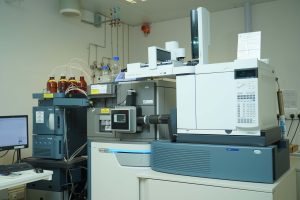A study conducted by researchers from the Institute of Chinese Medical Sciences (ICMS), University of Macau (UM), shows that an increased consumption of fish and nuts rich in n-3 polyunsaturated fatty acid (n-3 PUFA), leading to the nutritional balance of n-6/n-3 PUFA, can help to prevent fatty liver induced by alcohol consumption. The research findings have been published in Biochimica et Biophysica Acta – Molecular Basis of Disease, Critical Reviews in Food Science and Nutrition, and Biochemical Pharmacology.
Accumulating evidence suggests that excessive alcohol use over time can lead to fatty liver. Fatty liver is characterised by lipid accumulation in the liver, which has been widely recognised as a condition that may progress to the advanced stages of liver diseases, such as hepatitis, cirrhosis, and hepatic carcinoma. According to Wan Jianbo, an associate professor from the ICMS and the leader of the project, there has been an enormous increase in the consumption of n-6 PUFA due to the increased intake of vegetable oils, while the consumption of n-3 PUFA, which is rich in fish, seeds, and nuts, has been declining. This has resulted in a large increase in the n-6/n-3 ratio from 1-2:1 in the past to 20-30:1 today. The change in the composition of these essential PUFAs will significantly increase the prevalence of chronic diseases, such as cardiovascular diseases, cancer, and inflammatory diseases.
In a project titled ‘the role of n-6/n-3 PUFA ratio in alcoholic fatty liver’, using fat-1 transgenic mice (which can endogenously synthesise n-3 from n-6 PUFAs) and the supplementation of marine-derived or plant-derived n-3 PUFAs, a series of animal studies were conducted to determine the role of the decreasing tissue n-6/n-3 PUFA ratio in alcoholic hepatic steatosis, and the impact of n-6/n-3 PUFA ratio on lipid metabolism and inflammation at the liver-adipose tissue axis. ‘Increasing the dietary intake of n-3 PUFAs can reduce the n-6/n-3 PUFA ratio, which is of great significance to human health,’ says Prof Wan. In addition, previous studies from Prof Wan’s group also show that decreasing the n-6/n-3 PUFA ratio can help to tackle the pathogenesis of atherosclerosis, a main risk factor for cardiovascular diseases.
Source: Communications Office
Media Contact Information:Communications Office, University of Macau
Albee Lei Tel:(853) 88228004Kelvin U Tel:(853) 88224322Email:prs.media@um.edu.moUM Website:www.um.edu.mo


